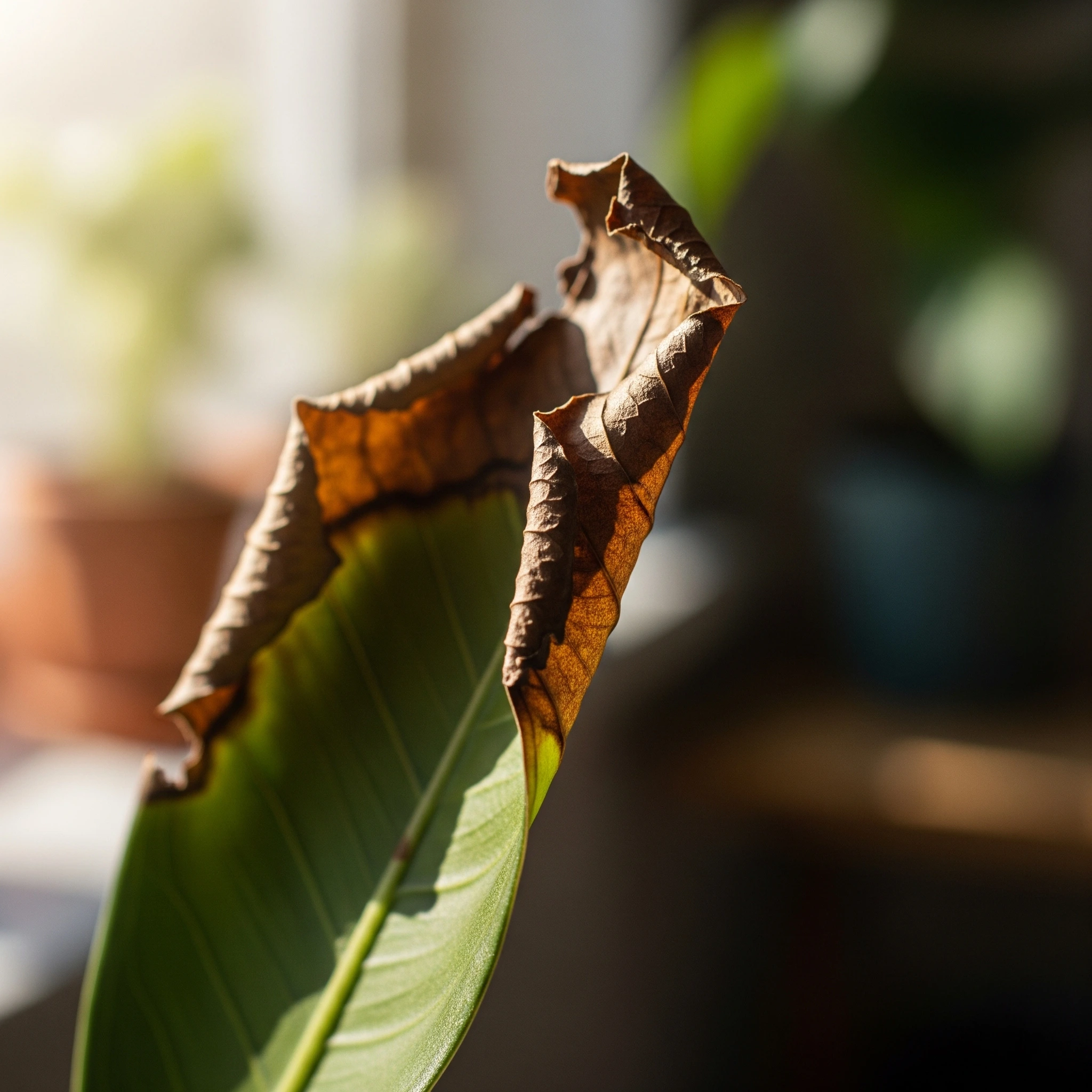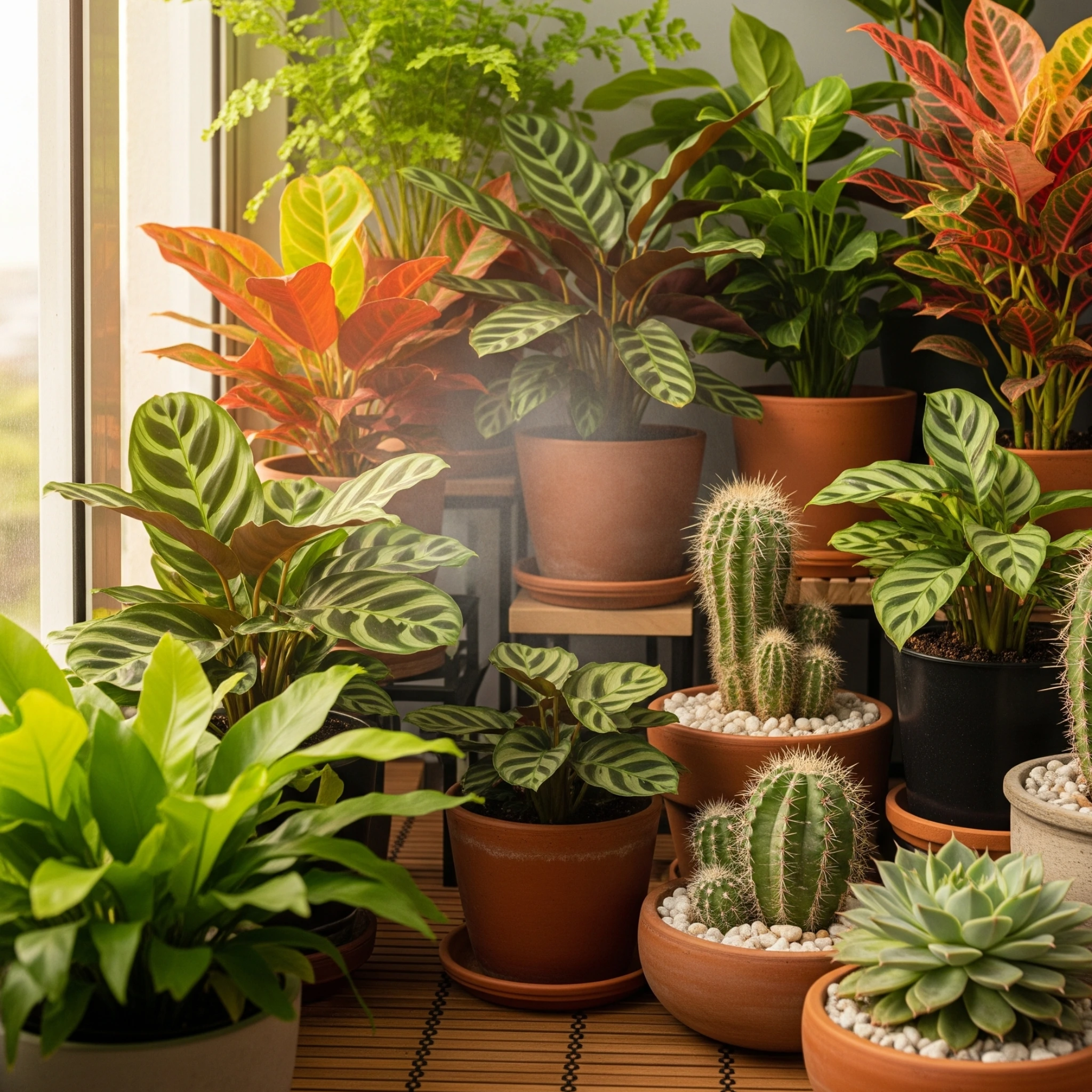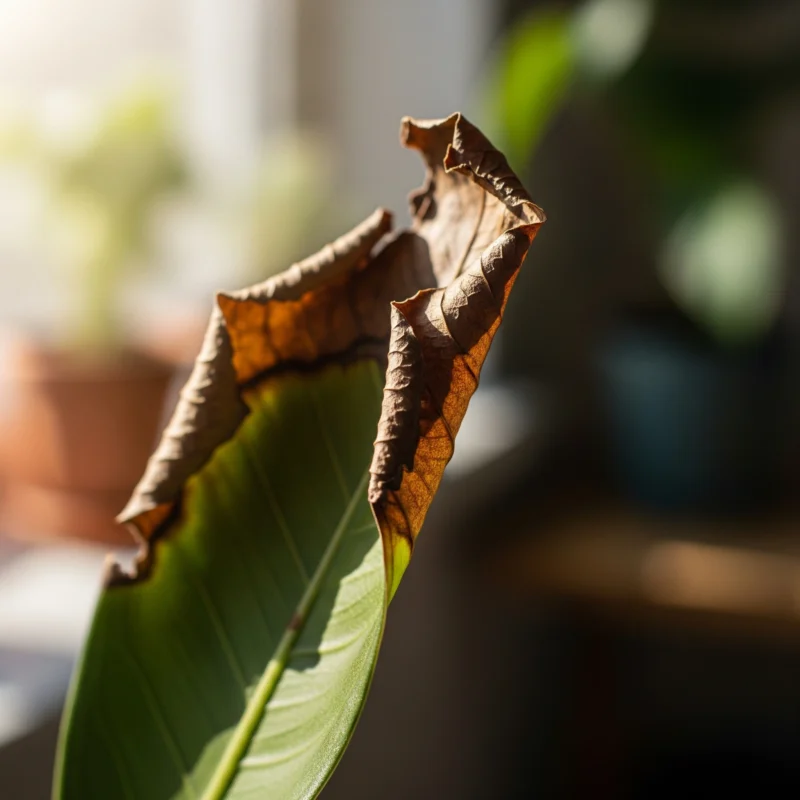Humidity for Indoor Plants: The Ultimate Guide to Thriving in Your Home (Australia & Canada)
Hello, passionate plant parents in Australia and Canada! Have you ever looked at your beautiful tropical plant and wondered why its leaves have crispy brown tips, despite perfect watering and light? The silent killer might not be a pest or a disease, but something much simpler: the dry air in your home.
Welcome to the ultimate guide to humidity for indoor plants! We’ll dive into the science behind why humidity is so crucial for your green companions, teach you how to decode your plant’s signs of distress, and provide you with five proven methods to solve the problem for good. Let’s get your plants thriving in the perfect environment!
Plants don’t just absorb water from the soil; they also absorb moisture from the air through tiny pores on their leaves, a process called transpiration. Many popular houseplants, especially tropical varieties (like Monsteras and Calatheas), originate from humid rainforests.
When the air in your home is too dry (a common issue in air-conditioned or heated homes in places like Calgary or during hot, dry Australian summers), your plant loses moisture faster than its roots can absorb it. This leads to classic signs of distress, and a good understanding of humidity for indoor plants is the key to solving them.
- Prevents Brown Tips: Dry air is the number one cause of crispy brown leaf tips and edges.
- Aids Photosynthesis: Adequate humidity helps plants transpire efficiently, which is a vital part of their food-making process.
- Reduces Pests: Many common houseplant pests, like spider mites, thrive in dry conditions. Boosting humidity can help deter them. (Internal Link: Natural Pest Control for Indoor Plants)
- Promotes Healthier Growth: A balanced environment with proper humidity for indoor plants leads to happier, more robust growth and lush, vibrant foliage.
Decoding the Signs: Does Your Plant Need More Humidity?
Your plants can’t speak, but they will show you signs when they are struggling with low humidity for plants. Look for these clues:
- Crispy, Brown Leaf Tips or Edges: This is the most common and obvious sign.
- Drooping or Curled Leaves: The plant is trying to conserve moisture.
- Slow or Stunted Growth: Without enough moisture in the air, the plant’s metabolism slows down.
- Stems are becoming brittle.
- Flowers are not blooming or they fall off prematurely.
- Pest infestations: A sudden appearance of spider mites or thrips can signal a very dry environment.
Personal Note: My Prayer Plant in my apartment in Melbourne started getting brown tips every summer when the air conditioning was on. I realized that it was a clear sign of low humidity for plants, and a simple humidifier fixed the issue almost instantly.

How to Increase Humidity for Indoor Plants: 5 Proven Methods
You don’t need a rainforest to solve the problem! Here are five simple yet effective methods for how to increase humidity for plants in your home.
1. Grouping Plants Together
- The “Why”: Plants naturally release moisture into the air through transpiration. By grouping them close together, you create a humid microclimate.
- The “How”: Arrange your plants in a small cluster on a tray or shelf. The combined moisture from multiple plants will benefit all of them. This is the simplest method for humidity for indoor plants.
2. Using a Pebble Tray
- The “Why”: This method creates a small, localized humid environment through evaporation.
- The “How”: Fill a shallow tray with pebbles or clay balls. Add water to the tray, but ensure the water level is below the top of the pebbles so the bottom of the pot doesn’t sit in stagnant water (which can lead to root rot). As the water evaporates, it adds humidity to the air around your plants.
- Best Use: Best for individual plants or small groupings.
3. Misting Plants: The Pros & Cons
- The “Why”: Misting provides an immediate, but very temporary, boost of humidity.
- The “How”: Use a spray bottle with distilled or filtered water to mist the leaves. Do this in the morning so the leaves have time to dry.
- Pros & Cons: Misting feels good and is an easy habit, but it only lasts for a few minutes. If done incorrectly (e.g., in low airflow), it can lead to fungal infections. It’s not a long-term solution, but it’s a great habit for mindful plant care.
4. Investing in a Humidifier
- The “Why”: This is the most effective and reliable method for how to increase humidity for plants, especially for a large collection or in a very dry climate.
- The “How”: Place a cool-mist humidifier near your plants and let it run for a few hours a day.
- Best Use: Dry regions, large collections of tropical plants, or during winter when heating dries out the air.
5. Placing Plants in the Right Rooms
- The “Why”: Some rooms in your home naturally have higher humidity.
- The “How”: Your bathroom, kitchen, or laundry room are great places for tropical plants. The steam from showers and cooking creates a perfect environment.
- Best Use: Placing plants like Ferns, Calatheas, or Orchids in these rooms can help them thrive.

What About Low Humidity? The Truth About Plant Needs
Not all plants are the same! A key part of mastering humidity for indoor plants is knowing which plants need what.
Plants that Love High Humidity
- Tropicals: Monsteras, Calatheas, Prayer Plants, Ferns, Orchids, Alocasias.
- Signs of Happiness: Lush, vibrant foliage with no brown tips.
- Care Tip: These are the plants that will benefit most from a humidifier or a pebble tray.
Plants that Tolerate Low Humidity
- Desert/Succulents: Succulents, Cacti, Snake Plants, ZZ Plants.
- Signs of Happiness: They will thrive and show no signs of distress in dry air.
- Care Tip: These plants are great for dry climates and require minimal fuss.

Humidity for Indoor Plants Q&A: Your Top Questions Answered
Should I mist my plants?
Misting can provide a temporary boost of humidity, but it’s not a long-term solution. It’s more of a mindful habit. For a real impact on humidity for indoor plants, a humidifier or a pebble tray is much more effective.
What is the ideal humidity level for my houseplants?
Most tropical houseplants thrive in humidity levels between 50% and 70%. You can use a small hygrometer (a humidity meter) to measure the level in your home. Levels below 40% are often a sign of low humidity for plants and can cause distress.
Do all indoor plants need high humidity?
No, not all indoor plants need high humidity. Desert plants like succulents, cacti, and Snake Plants actually prefer lower humidity and can rot in a very moist environment. It’s important to know the needs of your specific plant to provide the best care.
Can I place a plant in a sealed terrarium to increase humidity?
Yes, a sealed terrarium creates a self-contained, high-humidity ecosystem, perfect for plants that love moisture. This is an excellent method for providing high humidity for indoor plants that need it most, such as ferns and certain mosses.
Conclusion: Your Journey to a Happier, Healthier Plant Home
Mastering humidity for indoor plants is a key skill that can unlock the full potential of your green companions. By understanding the signs of distress and implementing these simple, proven methods, you can solve the mystery of brown tips and help your plants thrive.
Embrace your role as a mindful gardener and create a healthy, happy environment that benefits not only your plants but also your own well-being.
What is the one humidity for indoor plants tip you found most helpful in this guide? Share your thoughts and questions in the comments below!


